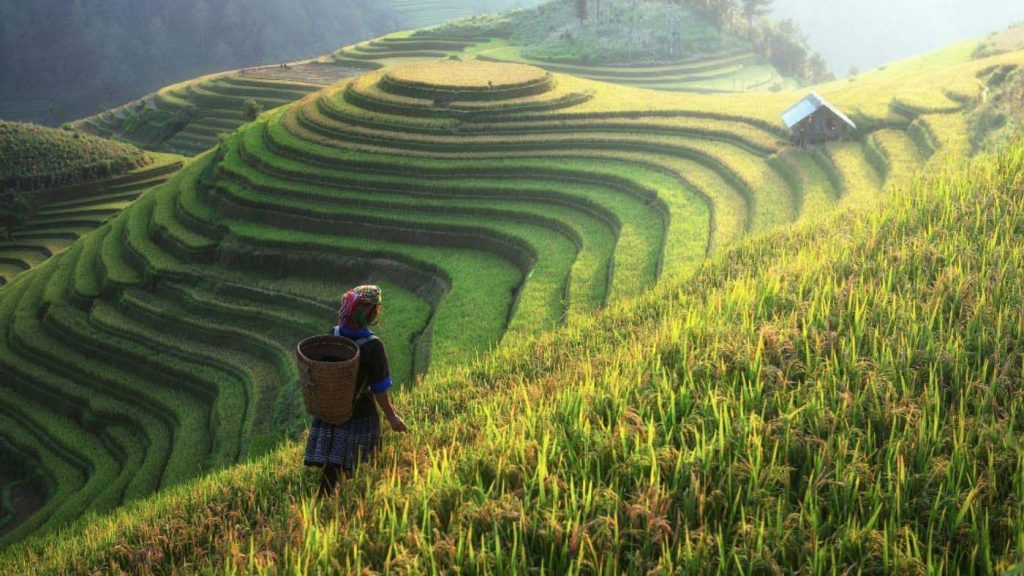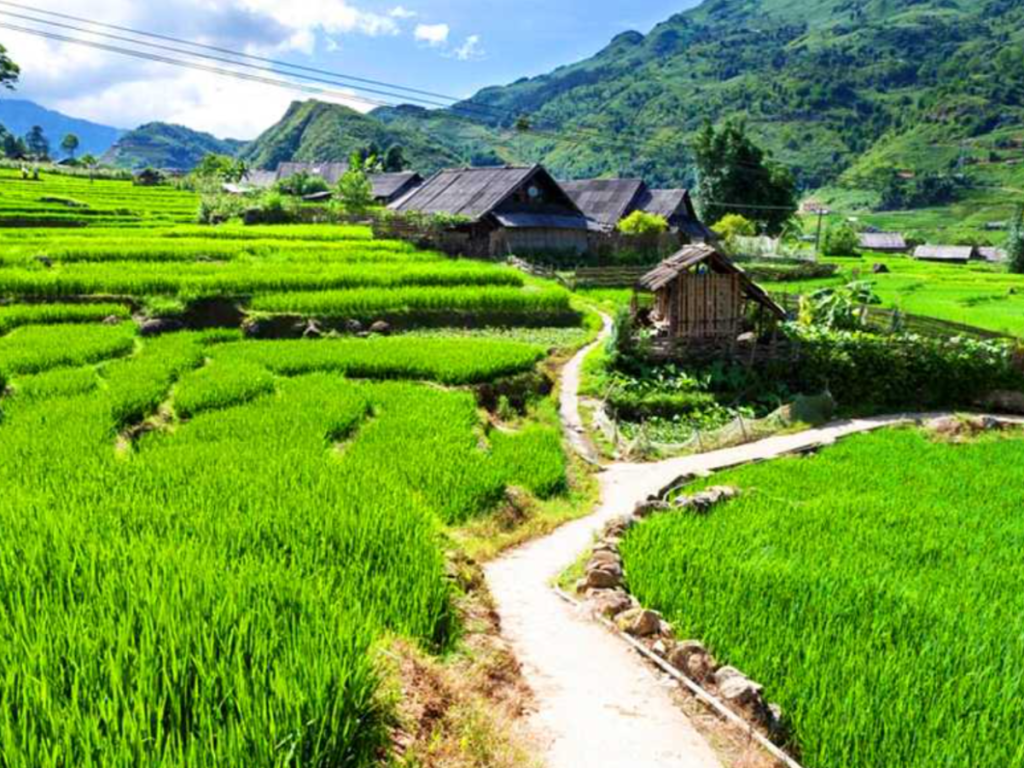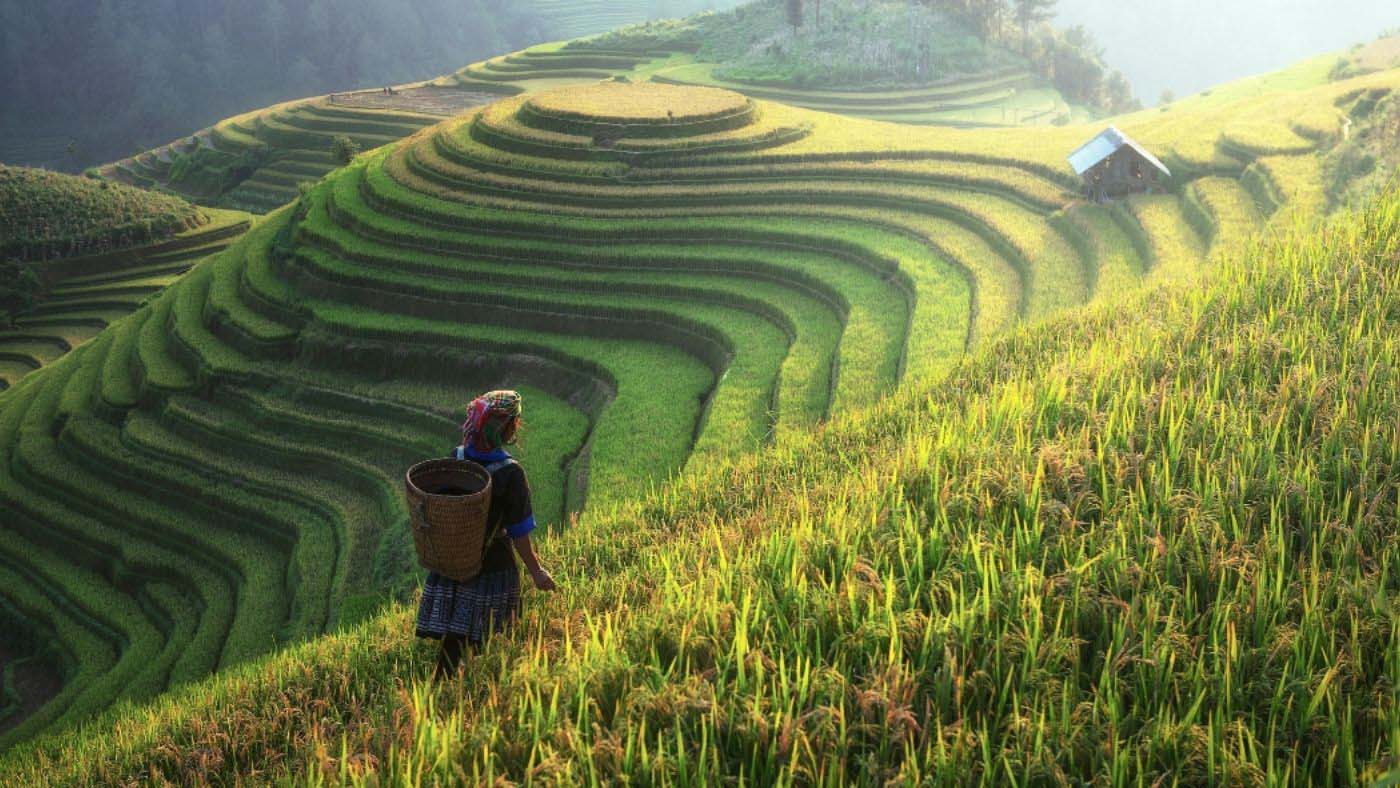
Mu Cang Chai Weather Guide: When to Visit and How to Prepare
Mu Cang Chai’s weather varies significantly by season, making it essential for travelers to understand the annual climate trends before visiting. Whether you’re hoping to see golden rice fields, misty mountain mornings, or clear, dry trekking routes, weather plays a vital role in shaping your experience. Nestled in Vietnam’s northwestern highlands, Mu Cang Chai features both rainy and dry seasons, each offering unique landscapes and experiences.
In this comprehensive guide, you’ll find seasonal weather patterns, optimal travel times, and practical tips to help you plan accordingly. Prepare to explore Mu Cang Chai with the weather in your favor.

Mu Cang Chai Weather – When to Visit for Ideal Conditions
Current Conditions
Today, the weather in Mu Cang Chai is warm, humid, and cloudy. From May to October, the rainy season brings frequent downpours and high humidity. Dew points commonly reach 78°F and may exceed 90°F in certain areas, making the atmosphere feel heavy and damp—less than ideal for prolonged outdoor activity.
Temperatures during the summer months frequently rise above 25°C (77°F), and during heat waves, can reach up to 39°C (102°F). Due to the combined heat and humidity, it is highly recommended to stay hydrated and wear breathable, lightweight clothing. Sudden, intense rainstorms are common, occasionally accompanied by whirlwinds or localized flooding. A waterproof jacket and sturdy, water-resistant footwear are essential.
Mu Cang Chai Weather by Season
Winter (December–February)
The winter months are dry and chilly, with average temperatures below 20°C (68°F) and nighttime lows near freezing. Frost is typical, and light snowfall may occur at higher elevations. The latter part of winter often features drizzles and mist, creating a tranquil, off-season ambiance ideal for travelers who enjoy solitude and cooler weather.
Spring (March–May)
Temperatures range from 15°C to 28°C (59–82°F), with warmer days and intermittent showers. This is a period of natural beauty, as peach, plum, and mustard flowers begin to bloom. It’s a favorable time for light trekking and cultural immersion during regional spring festivals and activities around Khau Pha Pass.
Summer/Monsoon (June–August)
This is the peak of the rainy season, with high humidity and temperatures between 25°C and 32°C (77–90°F), occasionally reaching above 38°C (100°F). While the lush greenery of the rice terraces flourishes during this time, heavy rain poses risks such as slippery roads, landslides, and flash floods. Those traveling during this season must be well-prepared with waterproof gear and should exercise caution.
Autumn (September–November)
Autumn offers a break from the rains, with cooler temperatures ranging from 15°C to 26°C (59–79°F). September may still see around 22 rainy days (approximately 192mm), but this is when the rice terraces turn golden. Mid-September to early October is ideal for photography and cultural exploration, as the harvest season brings celebrations and outdoor events.
Best Times to Visit Mu Cang Chai
Watering Season (May–June)
Terraces are filled with water, reflecting the sky in mirror-like fashion. Temperatures hover around 22–28°C, accompanied by cool breezes and occasional light rain. This is an ideal time for photographers and those looking to witness traditional planting ceremonies.
Green Season (July–August)
Young rice plants turn the terraces into vibrant green carpets. While rainfall and temperatures are higher, nature enthusiasts and trekkers still find this season rewarding.
Harvest Season (Mid-September to Mid-October)
Arguably the most popular time to visit, the landscape is transformed into golden fields. Weather is mild, and heavy rains are less frequent. Cultural activities and festivals enhance the experience.
Dry Season (November–March)
The landscape is no longer lush, but this period offers cool, dry conditions perfect for trekking and cultural exploration. With fewer tourists and stable weather, it’s ideal for off-the-beaten-path experiences.
How Weather Affects Travel and Outdoor Activities
- Trail and Road Conditions
Heavy rains can make trails muddy and dangerous, and landslides or flash floods can disrupt travel. The dry season is far more favorable for trekking and motorbike tours. - Scenic Beauty
- Watering season: Reflective rice fields, perfect for sunrise and sunset photos.
- Green season: Dense, lush landscapes.
- Harvest season: Bright golden fields for iconic photography.
- Temperature & Comfort
- Wet season: High humidity and heat demand breathable clothes and hydration.
- Dry season: Cool to cold temperatures require layered clothing, especially at night and in early mornings.
- Festivals & Cultural Events
The Khau Pha Paragliding Festival (May–June) and the Terrace Field Festival (September) coincide with scenic and cultural peaks. - Travel Logistics
High seasons (May–June and September–October) require early booking due to popularity. During the winter off-season, accommodations are more available, though some services may be reduced. - Safety Considerations
Always check weather forecasts and road conditions. Pack waterproof clothing, hiking boots, and essential safety gear. The dry season offers safer, more accessible routes.

Weather Tools & Tips for Travelers
- Reliable Forecasts
Use Weather.com, AccuWeather, or ClimeRadar for 10-day forecasts, temperature trends, and radar imagery. - Monsoon Alerts
During peak rainy months (May–September), stay updated on flash flood and storm warnings via mobile weather apps. - Seasonal Insights
Websites like Vinpearl or Autour Asia provide valuable historical data, including average rainfall and temperature ranges (0–39°C annually). - Real-Time Notifications
Enable alerts on your weather apps to avoid sudden storms, particularly important for early hikes or motorbike trips. - Buffer Days
Build flexibility into your itinerary in case of unexpected weather delays. - Smart Packing List
- Rain gear and waterproof bags
- Quick-drying clothes
- Sealed containers for electronics
- Warm layers for cool mornings and nights
- Local Advice
Consult your hotel or guide daily for accurate weather updates and route recommendations, especially in remote areas. - Use Radar Maps
Radar apps can help you visualize storm movement and plan accordingly.
| Tool/Tip | Benefit |
|---|---|
| Weather App Alerts | Notifies about rain or storms |
| Radar Visualization | Tracks nearby precipitation |
| Buffer Days | Prevents disruption of major activities |
| Waterproof Gear | Keeps you dry and safe |
| Local Recommendations | Provides real-time and area-specific insights |
Experience Mu Cang Chai with Adventure Indochina Travel
Since 2007, Adventure Indochina Travel has proudly served as a leading tour operator in northern Vietnam. With over 2,000 five-star TripAdvisor reviews, we specialize in immersive, culturally rich journeys across Vietnam, Laos, and Cambodia. Our community-focused approach supports sustainable tourism and uplifts local economies, while our innovative team utilizes 4.0 travel technology—including immersive 3D previews—to enhance the planning experience.
Choose Adventure Indochina Travel for expert planning, authentic experiences, and unforgettable adventures designed with both comfort and culture in mind.
Final Thoughts
Mu Cang Chai’s weather shapes every aspect of your journey—from early morning fogs clinging to the mountains to vivid sunsets over ripened rice fields. With proper planning, awareness of seasonal changes, and preparation for varying conditions, you can enjoy the best this highland gem has to offer. Whether you’re photographing mirror-like terraces in June or celebrating the golden harvest in October, understanding Mu Cang Chai’s weather ensures an enriching and well-prepared travel experience.



